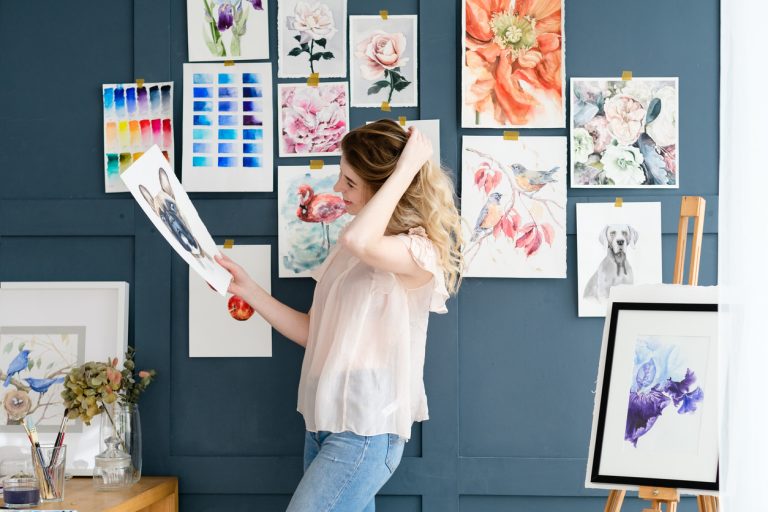Some artists handle the divide between amateur and professional more easily than others. While some can become disillusioned by a stop-start practice defined by only occasional sales or gallery interest (perhaps due to prohibitive time, money or location factors), others may happily make work for their own pleasure with little thought of appealing to the commercial market.
Unfortunately, even if you are serious about making the transition from disorganised dabbler to savvy art-world player, the more predictable tomes on various aspects of professional practice — from pricing your work to techniques relevant to such disciplines as printmaking — can sometimes be a little dry.
So, here are three slightly less “obvious” books for the prospective art professional that we have sampled first-hand.
Art is your life. Make it your living. – Susan Mumford and Chris King
Art-world entrepreneur, mentor, speaker and author Susan Mumford has, among a host of other activities aimed at assisting artists’ professional development, attracted a strong following for her Be Smart About Art blog with its regular entries bearing such instructive titles as “Exposure” is often overrated and Don’t exaggerate – you stand to make yourself look foolish instead.
As regular readers of that blog can attest, the accompanying photographs by Chris King are no less memorable than Susan’s entertaining and informative advice. That is just one more reason – besides the demystifying effect it has on the art world for those still “on the outside, looking in” – why Art is your life. Make it your living., which compiles the first two years’ worth of stories from the blog, should be such a welcoming addition to so many budding art professionals’ bookshelves.
Artists’ survival guide – V2 in Collaboration and Tara Cranswick
The art world is full of word-of-mouth wisdom that never seems to be turned into written word – except in books like this one. Handily sized for shoving into your pocket for later reference whenever you need it, Artists’ survival guide offers the useful directories indicated by its title, including web links for studio providers, art supplies stores, open access print studios, fabricators and other invaluable art world organisations and contacts.
However, with printed directories always liable to go out of date – this one was published in 2013, after all – you may come to refer more often to Artists’ survival guide for advice on such matters as deciding on a studio, the tools you need, how to use paint, art handling, the installation of exhibitions and the use of media players for visual and sound installations.
In short, Artists’ survival guide is all about that nitty-gritty stuff that you might have always felt awkward asking your old university tutor about and that may have led you to exclaim in frustration more than a few times, “Why isn’t all of this stuff just written down somewhere??”
The artist in the office: how to creatively survive and thrive seven days a week – Summer Pierre
This one is likely to have you turning the pages for the simple reason that its words can be related to so easily. Who hasn’t thought, “I’m not a real artist because I can’t afford to do it full-time” or “If only I wasn’t stuck in this disempowering/dull/dreadful job, I’d finally be able to thrive as an artist?” You may have even declared yourself some kind of tragically forgotten genius.
Of course, many of these beliefs are founded on enduring myths that the author – Brooklyn artist, writer and musician, but also sometime nanny, admin assistant and art store clerk Summer Pierre – seeks to explode. The common cry that “I just don’t have the time”, for instance, is met with such suggestions as “Limit television”, “Stay at work late” and “Remember lunchtime adventures” – all seemingly common sense advice, but which so few frustrated creative types actually follow.
The moral of Pierre’s story is that you don’t have to put off your creative dreams forever or continue to be defined by the same old excuses that conveniently prevent you from ever realising those aspirations. The book is illustrated with the author’s own art, interspersing inspiring prose with witty quotes and quirky drawings – albeit, with a practical tone rather than an overly idealised one.
What are some of the “surprising” art books that have helped you to be more productive with your art practice and finally start taking a more professional approach to your long-held “hobby”? Feel free to share your thoughts below.







